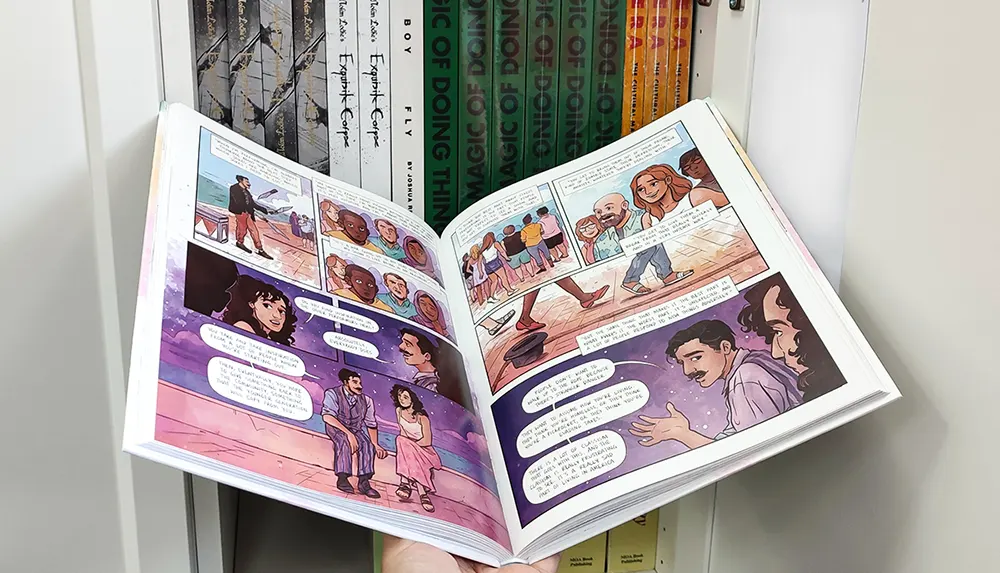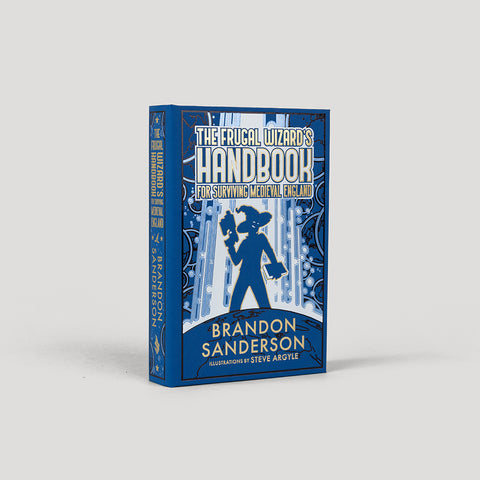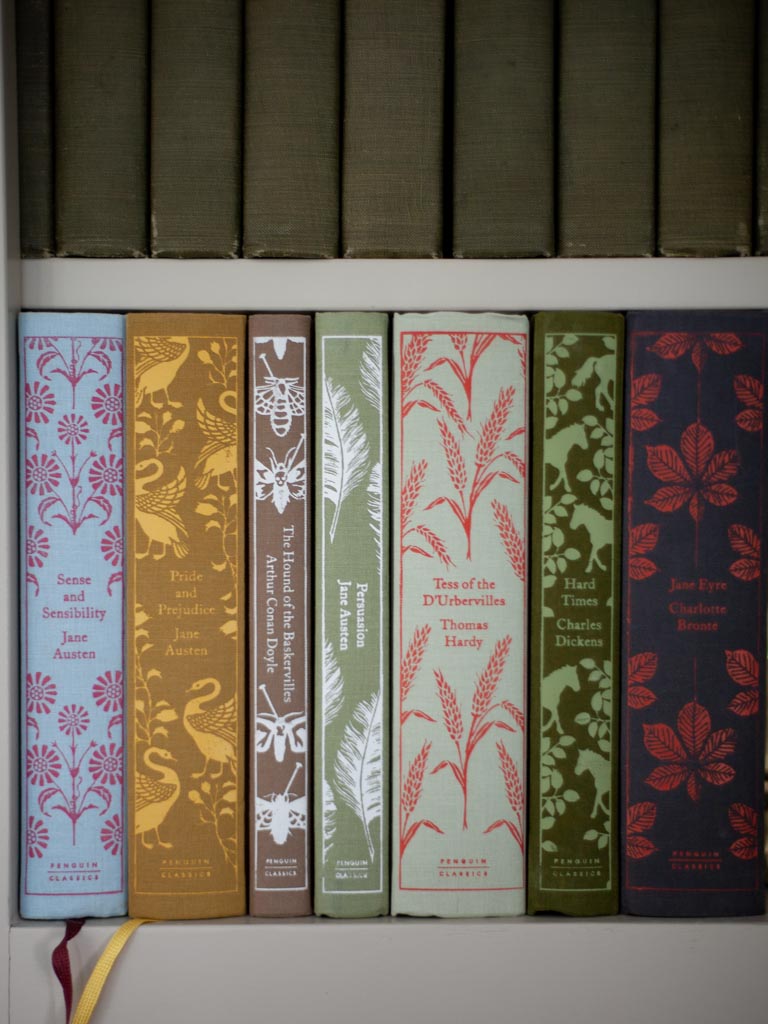A Curated Guide to Award-Winning Hardcover Books
A Curated Guide to Award-Winning Hardcover Books
Blog Article
A Comprehensive Overview to the Process of Hardcover Books Printing
When you begin the trip of hardbound publication printing, recognizing the whole procedure is crucial. From preparing your manuscript to choosing the best products, each step plays a critical role in the end product. You'll need to consider layout elements and printing strategies that match your vision. As you navigate with binding and quality control, you'll find that every choice affects guide's total appeal. So, what comes next in this detailed process?
Comprehending the Hardcover Book Structure
When you discover the globe of hardcover publications, you'll promptly discover that their framework is deliberate and distinctive. You'll discover a textile or natural leather covering, which not just improves appearances yet likewise includes to the publication's durability.
The text block itself is composed of numerous trademarks, or folded up sheets, stitched with each other for stamina. You'll see that the spinal column is reinforced, enabling a smooth lay-flat analysis experience - hardcover books. Additionally, guide's weight frequently communicates a feeling of high quality and permanence
Hardcover publications generally include a dust coat, which functions as a marketing device while shielding the cover. Understanding these components aids you value the workmanship behind hardbound books and their unique allure in the literary world.
Manuscript Preparation and Modifying
Obtaining your manuscript all set for printing is important, and it begins with correct formatting guidelines. You'll require to understand the modifying process to refine your job and guarantee it reverberates with visitors. And also, grasping checking strategies can help you capture those pesky errors prior to your book goes to print.

Manuscript Format Guidelines
Appropriate manuscript format is vital for producing a professional-looking hardcover book. Begin by selecting a basic font like Times New Roman or Arial in 12-point size. Use double-spacing throughout the record to boost readability. Set your margins to 1 inch on all sides, offering your message space to take a breath. Number your web pages in the top right corner, and include your chapter titles at the beginning of each new section. Use clear headings to suggest areas, and prevent too much format like strong or italics unless needed. Ensure to proofread your manuscript for uniformity stylishly, making sure that every little thing from punctuation to spacing sticks to your selected standards. Adhering to these actions will establish a solid foundation for your book.
Editing And Enhancing Refine Fundamentals
Modifying your manuscript is a necessary action that can transform it from an outline right into a refined end product. Beginning by reviewing through your work critically, concentrating on clarity, structure, and circulation. Look for incongruities in your narrative, character development, or argumentation. It's practical to take breaks in between rounds of editing and enhancing to obtain fresh perspectives. Do not wait to cut unneeded content or rephrase awkward sentences; this will boost readability. Think about looking for comments from relied on peers or expert editors who can provide important insights. Remember, editing isn't practically taking care of errors; it has to do with improving your voice and ensuring your message reverberates with visitors. Accept the process, and you'll see your manuscript sparkle.
Checking Strategies Summary
As soon as you've brightened your manuscript through editing, the next step is to guarantee it's free of mistakes that could distract readers. Start by pausing after editing and enhancing; fresh eyes catch blunders much better. Review your manuscript aloud-- this aids you listen to unpleasant wording and spot typos. Usage electronic tools like spell checkers for initial scans, but don't depend exclusively on them. Think about printing your manuscript; reading on paper can reveal mistakes that displays miss. Focus on one kind of mistake at a time, whether it's punctuation or grammar, to avoid sensation overwhelmed. Employ a trusted buddy or specialist proofreader to offer a fresh point of view. Their comments can highlight problems you could overlook.
Designing guide Cover and Interior
When you're making your publication cover and interior, you'll intend to concentrate on crucial design elements that record your audience's focus. Selecting the right typography designs and carefully selecting shades and imagery can make all the difference in communicating your book's motif. Let's discover how these selections can boost your work and attract visitors.
Necessary Layout Components
Producing a captivating publication cover and a well-designed inside is essential for drawing in readers and improving their experience. Select colors and images that show your book's style and state of mind.
A tidy, well organized design assists readers navigate effortlessly. Keep in mind, a cohesive layout throughout your publication cultivates an expert look that can significantly influence a viewers's choice to pick it up.
Choosing Typography Designs
Typography plays a crucial role in both the book cover read more and interior style, shaping exactly how visitors view your content. When selecting typography styles, consider your book's category and target audience. A traditional serif font might function well for literary fiction, while a modern-day sans-serif might fit a contemporary novel. Assurance readability; your text must be very easy on the eyes, particularly for longer flows. Take note of font size and line spacing, as these aspects affect overall circulation. Mixing typefaces can include interest, yet restrict it to two or 3 to preserve coherence. Assume regarding power structure-- utilize different designs for headings and body text to guide viewers easily with your job. Your typography choices will considerably influence the viewers's experience.
Shade and Imagery Choice
Picking the ideal shades and imagery is important for catching visitors' focus and conveying your book's motifs. Begin by considering your category; vivid colors might help a youngsters's book, while muted tones suit a secret book. hardcover books. Use imagery that resonates with your web content-- photos, pictures, or abstract layouts can boost your message
When developing the cover, make specific the images doesn't bewilder the title and writer's name; clarity is key. This cohesive strategy not just elevates your publication's visual yet also improves the visitor's experience, making it a lot more remarkable.
Selecting the Right Paper and Products
When selecting paper and materials for your hardcover book, it's important to ponder exactly how they'll influence the overall feel and look of your job. Beginning by picking the appropriate paper weight; heavier supply frequently conveys quality and resilience, while lighter paper can produce a more fragile touch. Take into consideration the finish as well; shiny paper enhances shades and pictures, while matte can offer an advanced, underrated look.
Cloth, natural leather, or printed paper can set the tone for your book. In addition, assume concerning the binding materials; utilizing high-quality sticky assurances your book lasts.
Inevitably, the options you make below reflect your vision, so make the effort to sample go to this website various products (hardcover books). Your choices will help develop a book that's not just visually appealing but useful and additionally durable
The Printing Refine: Techniques and Technologies
A variety of printing techniques and modern technologies can bring your hardcover book to life, each offering distinct advantages. Digital printing is a preferred option for brief runs, permitting for quick turn-around and economical services.
Comprehending these techniques aids you make informed decisions, guaranteeing your hardbound book not just looks wonderful yet additionally meets your manufacturing requires properly. Choose the right approach to elevate your publication's appeal and impact.
Binding Techniques for Hardcover Books
Several binding approaches can change your hardbound publication right into a sturdy and eye-catching item. One more method is the excellent binding, which makes use of glue to hold the web pages with each other, permitting for a smooth spine but less longevity contrasted to instance binding.
You may additionally think about spiral binding, which permits your publication to lay level, making it excellent for workbooks or manuals. It doesn't supply the same protective cover as instance binding. There's the saddle stitch method, appropriate for smaller sized publications, where sheets are folded up and stapled with each other. Each binding approach has its advantages and fits different requirements, so think of your publication's purpose and target market when picking the ideal option for your project.
High Quality Control and Final Touches
After choosing the right binding method for your hardbound publication, quality control becomes necessary to validate your final item meets your assumptions. Begin by checking the printed pages for any mistakes or variances in shade and layout. You do not wish to miss out on any typos or misprints that can affect your readers' experience.
Next, examine the binding honesty. Validate the pages are safely connected and that the spinal column is strong. A well-bound publication not just looks specialist but also feels long lasting in your hands.
Furthermore, take notice of the cover. Search for any type of scuff marks or misalignments in the art work. If you've opted for unique surfaces like embossing or foil marking, make certain they're used constantly across all duplicates.
Lastly, conduct an extensive evaluation of the whole batch prior to relocating to distribution. This means, you can verify that every publication shows your high criteria.
Often Asked Questions
For how long Does the Hardcover Book Printing Refine Typically Take?

What Is the Minimum Order Amount for Hardbound Books?
The minimum order amount for hardcover books usually starts around 100 duplicates, yet it can vary based on the printer. You should get in touch with your selected printing solution for their certain demands and pricing.

Can I Publish Hardcover Books in Custom-made Sizes?
Yes, you can print hardcover books in custom-made dimensions. Several printing services offer flexibility with dimensions, allowing you to select a style that fits your job. Simply verify the requirements prior to putting your order.
Exist Eco-Friendly Options for Hardbound Publication Printing?
Yes, you can discover green options for hardcover publication printing. Several firms make use of recycled products and lasting inks. Just ask your printer about their green practices directory to guarantee your project straightens with your ecological worths.
What Are the Expenses Related To Hardcover Book Printing?
When considering hardbound publication printing expenses, you'll need to consider products, layout, and printing techniques. Extra expenses like delivery and binding can additionally affect your overall budget, so strategy appropriately for your project.
When you begin the journey of hardbound book printing, recognizing the entire procedure is essential.A selection of printing methods and innovations can bring your hardbound publication to life, each offering distinct benefits. How Lengthy Does the Hardbound Book Printing Refine Normally Take?
The hardcover publication printing process usually takes around 2 to 6 weeks.Yes, you can find environment-friendly choices for hardbound book printing.
Report this page